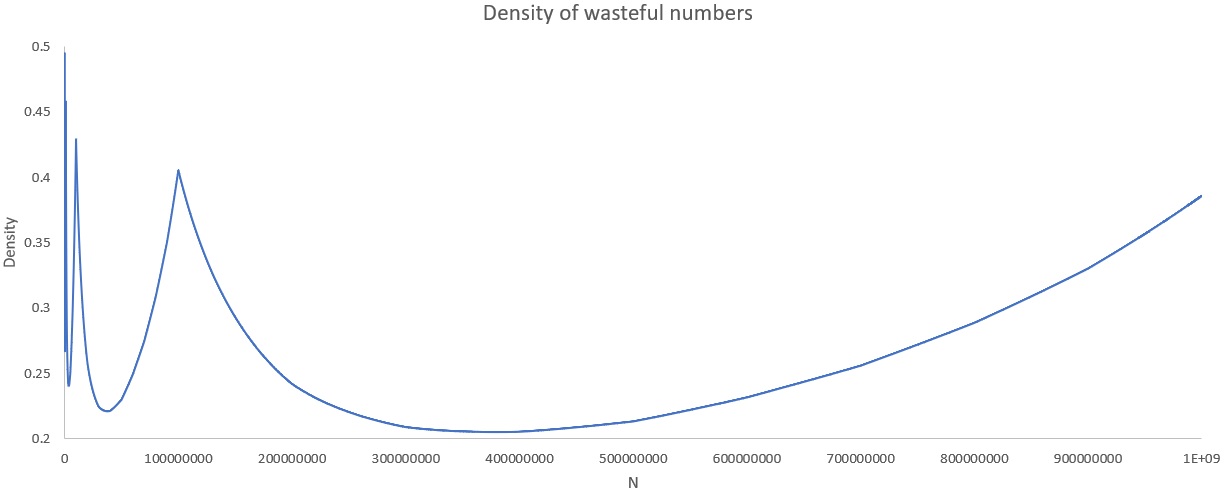Note: Posting in MO since it was unanswered in MSE
Let $f(x)$ be the number of digits in the decimal representation of $x$ e.g. $, f(0) = 1, f(1729) = 4$. If $n = ab$ then we can show that $f(ab) > f(a) + f(b)$ is impossible. Hence $f(ab)$ is either less than or equal to $f(a) + f(b)$. Loosely speaking if $f(ab) < f(a) + f(b)$, we are using more digits than the number itself hence the number of digits get inflated.
Definition: A number $n$ is said to be inflated if for all its divisors $n = ab$, we have $f(ab) < f(a) + f(b)$.
E.g. The divisors of $4321$ are $[1, 29, 149, 4321]$ and clearly $4321$ is wasteful. But $4324$ is not a wasteful number since $4324 = 46 \times 94$ and $f(4324) = f(46) + f(94) = 4$. Trivially, all primes $p$ are wasteful since $f(p \times 1) < f(p) + f(1)$. The first few inflated numbers are:
$$ 2, 3, 4, 5, 6, 7, 8, 9, 11, 13, 17, 19, 22, 23, 26, 29, 31, 33, 34, 37, 38, 39, 41, 43, 44, 46, 47, 50, 51, 52, 53, 55, 57, 58, 59, 60, 61, 62, 65, 66, 67, 68, 69, 70, 71, 73, 74, 75, 76, 77, 78, 79, 80, 82, 83, 84, 85, 86, 87, 88, 89, 90, 91, 92, 93, 94, 95, 96, 97, 98, 99 $$
Graph for the density of wasteful numbers below $10^9$. There are $386000005$ wasteful numbers below $10^9$.
Question 1: In the comments of the posts in the linked question in MSE, it as noted by different users that the sequence of inflated numbers appears to be same as OEIS A122427. This is not immediately obvious because the two sequence seems to have different definitions. Are these two sequences identical?
Question 2: What are the necessary and sufficient conditions for a number to be an inflated number? Does the natural density of inflated numbers exist? Experimental data for $n \le 10^9$ suggests that it oscillates in a regular pattern between $0.2$ and $0.4$.

